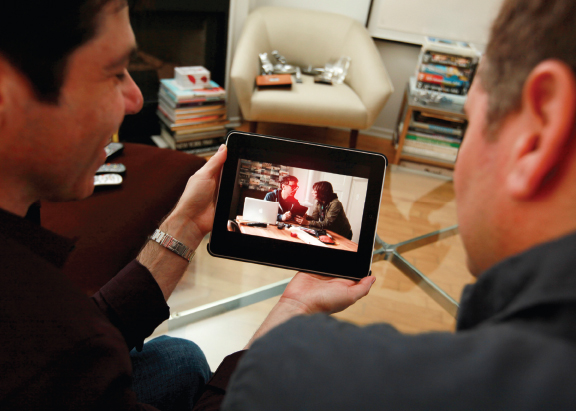Fourth Screens: Smartphones and Mobile Video

A 2010 Nielsen survey found that in a one-month period, an average viewer spent three and a half hours using a computer and television at the same time. Nielsen also estimated that 60 percent of viewers are online at least once a month while they are watching television.7 Such multitasking has further accelerated with new fourth-screen technologies like smartphones, iPods, iPads, and mobile TV devices. These devices are forcing major changes in consumer viewing habits and media content creation. For example, between January 2010 and January 2011, online viewers “streamed 28 percent more video, and spent 45 percent more time watching.”8 Cable and DBS operators are capitalizing on this trend: Cablevision, Time Warner, and DISH Network released iPad apps in 2011, allowing their subscribers to watch live TV on their iPads at no additional charge, in the hopes of deterring their customers from cutting their subscriptions. However, some cable programmers like Discovery and Viacom are pushing back, arguing that their existing contracts with cable and DBS operators don’t cover third or fourth screens.
“Teenagers today barely understand the idea of watching TV on someone else’s schedule. When you tell them we didn’t leave home because our show was coming on at 9 P.M., to them it sounds like our great-grandparents talking to us about horses and buggies.”
JEFFREY COLE, DIRECTOR, CENTER FOR THE DIGITAL FUTURE, 2009
The multifunctionality and portability of third- and fourth-screen devices means that consumers may no longer need television sets—just as landline telephones have fallen out of favor as more people rely solely on their mobile phones. If where we watch TV programming changes, does TV programming also need to change to keep up? Reality shows like Jersey Shore and dramas like Game of Thrones—with extended casts and multiple plot lines—are considered best suited for the digital age, enabling viewers to talk to one another on various social networks about favorite characters and plots at the same time as they watch these programs on traditional—or nontraditional—TV.